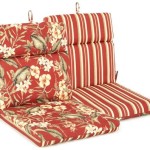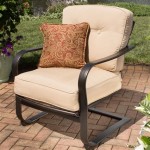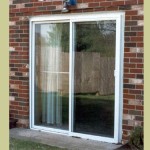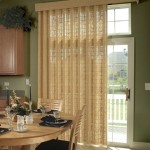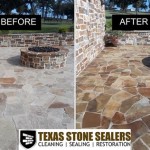Privacy Fence Solutions for Small Patios: Creating a Secluded Outdoor Oasis
Small patios present unique challenges and opportunities for homeowners seeking privacy. Limited square footage necessitates careful consideration of design and material choices when selecting a privacy fence. An effective privacy fence maximizes usable space, minimizes visual intrusion, and enhances the overall aesthetic appeal of the patio. The following details the key aspects of choosing and implementing a privacy fence for a small patio, encompassing material selection, design considerations, and installation tips. Factors like local regulations and budget also play important roles in the final decision-making process.
Material Selection for Small Patio Privacy Fences
The choice of material significantly impacts the cost, durability, and visual impact of a privacy fence. Several materials are available, each with distinct advantages and disadvantages relevant to a small patio environment. These materials include wood, vinyl, composite, metal, and natural options like bamboo or strategically placed shrubbery. Understanding the properties of each material is crucial for making an informed decision that aligns with specific needs and preferences.
Wood: Wood fences are a classic and versatile choice, offering a natural aesthetic and relatively affordable price point, especially when compared to vinyl or composite. Common wood types include cedar, redwood, and pressure-treated pine. Cedar and redwood are naturally resistant to rot and insects, making them preferable options despite their higher cost. Pressure-treated pine requires regular maintenance to prevent decay. A wood fence can be stained or painted to match the existing home exterior or to create a contrasting visual element. However, wood fences require regular maintenance, including staining or painting every few years, to prevent warping, cracking, and decay. The upkeep needed may be a determining factor for some homeowners.
Vinyl: Vinyl fences are a low-maintenance alternative to wood. They do not require painting or staining and are resistant to rot, insects, and fading. Vinyl fences are available in a variety of colors and styles, mimicking the appearance of wood. Initial cost is often higher than wood, but the long-term savings on maintenance can offset the initial investment. Vinyl is also easier to clean, typically requiring only a pressure washer or garden hose. While durable, vinyl can become brittle in extreme cold and may be more susceptible to impact damage than wood. Selecting a high-quality vinyl product is important to ensure longevity.
Composite: Composite fences are made from a blend of wood fibers and recycled plastic. This material offers the look of wood with the durability of plastic. Composite fences are resistant to rot, insects, and fading, requiring minimal maintenance. The initial cost is generally higher than wood but lower than some high-end vinyl options. Composite fences are a good choice for homeowners seeking a balance between aesthetics, durability, and sustainability. However, composite materials can still be susceptible to mold and mildew growth in excessively damp conditions, requiring occasional cleaning.
Metal: Metal fences, particularly wrought iron or aluminum, offer a more modern and decorative aesthetic. While they may not provide complete privacy in a traditional sense, they can be combined with other elements, such as lattice panels or climbing plants, to achieve the desired level of seclusion. Metal fences are durable and require minimal maintenance. Aluminum is a lightweight and rust-resistant option, while wrought iron is more robust but requires protective coatings to prevent rust. The cost of metal fences can vary widely depending on the design and material.
Natural Options: For a more organic and eco-friendly approach to privacy, homeowners can consider using natural materials like bamboo screens or strategically planted shrubs and hedges. Bamboo screens are lightweight, portable, and offer a natural aesthetic. They can be easily installed and moved as needed. Hedges and shrubs provide a living privacy screen, adding greenery and visual interest to the patio. Evergreen varieties offer year-round privacy. However, natural options require ongoing maintenance, including watering, pruning, and fertilization. The time and effort required to maintain natural privacy screens should be considered.
Design Considerations for Maximizing Privacy in Small Spaces
The design of the privacy fence is paramount in maximizing its effectiveness and minimizing its footprint on a small patio. Height, style, and overall aesthetic should all be carefully considered. The optimal design balances privacy with visual appeal, creating a secluded and inviting outdoor space. Strategic placement of the fence is also important to maximize its impact and minimize obstruction of natural light.
Height: The height of the privacy fence directly affects the level of seclusion it provides. Local regulations often dictate maximum fence heights, so it is crucial to check with local authorities before commencing construction. A fence height of six feet is generally considered adequate for providing a reasonable level of privacy. However, in some situations, a taller fence may be necessary to block views from neighboring properties or elevated vantage points. Conversely, in very small patios, an excessively tall fence can create a feeling of claustrophobia, so finding a balance is key.
Style: The style of the privacy fence significantly contributes to the overall aesthetic of the patio. Solid panel fences offer maximum privacy but can also feel imposing in a small space. Lattice panels or fences with decorative cutouts allow for some visual permeability while still providing a degree of privacy. Combining different styles, such as a solid panel base with a lattice top, can strike a balance between privacy and visual appeal. The style should complement the existing architecture of the home and the overall design of the patio.
Color: The color of the privacy fence can significantly impact the perceived size of the patio. Lighter colors tend to make a space feel larger and more open, while darker colors can make it feel smaller and more enclosed. Choosing a color that complements the existing landscape and home exterior is important. A neutral color palette, such as beige, gray, or white, is often a safe and versatile choice. Consider also the potential for the color to fade over time and require re-application or replacement.
Placement: The placement of the privacy fence is crucial for maximizing its impact and minimizing its obstruction of natural light. Ideally, the fence should be positioned along the property line or in a location that effectively blocks unwanted views. Consider the angle of the sun and the potential for the fence to cast shadows on the patio. Avoid placing the fence in a location that will significantly reduce the amount of sunlight reaching the patio. In some cases, strategic placement of plants or other landscaping elements can enhance the effectiveness of the fence and create a more natural and inviting environment.
Integration with Existing Structures: Consider integrating the privacy fence with existing structures, such as walls or trellises, to create a cohesive and seamless design. This can help to minimize the visual impact of the fence and make it feel like a natural extension of the home. Adding climbing plants or incorporating built-in seating into the fence design can further enhance its functionality and aesthetic appeal. This also minimizes the space taken up by the fence, a crucial consideration in small patios.
Installation Tips and Considerations for Small Patio Fences
Proper installation is essential for ensuring the longevity and effectiveness of the privacy fence. Whether opting for professional installation or a DIY project, careful planning and attention to detail are crucial. Consider local building codes, underground utilities, and proper drainage when planning the installation. Choosing the right tools and materials is also important for a successful installation. In small patios, space constraints can make installation more challenging, requiring careful maneuvering and precise measurements.
Local Regulations: Before commencing any fence construction, it is essential to check with local authorities regarding building codes and permit requirements. Many municipalities have regulations regarding fence height, materials, and setbacks from property lines. Failure to comply with these regulations can result in fines or the need to remove and rebuild the fence. Contacting the local building department or reviewing the city's zoning ordinances is recommended.
Underground Utilities: Before digging any holes for fence posts, it is crucial to locate any underground utilities, such as gas lines, water pipes, and electrical cables. Contacting the local utility companies to mark the location of these utilities is essential to prevent damage and potential injury. Call before you dig services are typically free and can save significant time and expense.
Drainage: Proper drainage is essential for preventing water damage to the fence and the surrounding patio area. Ensure that the fence posts are set in concrete and that the ground slopes away from the fence to allow for proper water runoff. Consider installing drainage systems, such as French drains, to prevent water from pooling around the fence. Excess water can accelerate rot in wooden fences and contribute to mold growth on other materials.
Tools and Materials: Selecting the right tools and materials is essential for a successful fence installation. This includes post hole diggers, levels, measuring tapes, saws, drills, and appropriate fasteners. Using high-quality materials, such as pressure-treated lumber or durable vinyl, will ensure the longevity of the fence. Investing in the right tools will make the installation process easier and more efficient.
DIY vs. Professional Installation: Homeowners must decide whether to install the privacy fence themselves or hire a professional contractor. DIY installation can save money on labor costs but requires time, effort, and some level of skill. Professional installation ensures that the fence is installed correctly and according to local building codes. Consider the complexity of the project, the homeowner's skill level, and the available budget when making this decision. Getting quotes from multiple contractors is recommended to compare prices and services.
Dealing with Small Space Constraints: Installing a fence in a small patio can be challenging due to limited space. Careful planning and precise measurements are essential. Consider using smaller tools and equipment to navigate tight spaces. Pre-assembling sections of the fence can also help to streamline the installation process. Working with a helper can make the task easier and more efficient.

Small Patio Ideas Privacy Outdoor Chairs Fence Garden Backyard Landscaping

11 Backyard Privacy Ideas Extra Space Storage

How To Build A Patio Privacy Fence That Wows Your Guests Perimtec

21 Best Backyard Privacy Fence Ideas For Every Style And Need

How To Build A Patio Privacy Fence That Wows Your Guests Perimtec

Small Condo Patio Design Ideas Pictures Remodel And Decor Easy

Porch Patio Privacy Fence Ideas Centsational Style

How To Build A Diy Privacy Fence Easy 6 Step Project

10 Privacy Fence Ideas For Your Yard The Family Handyman
:strip_icc()/101274518-5153750e1bc24c638a29481ecd370e5d.jpg?strip=all)
Garden Privacy Ideas That Incorporate Landscaping And Hardscaping
See Also

